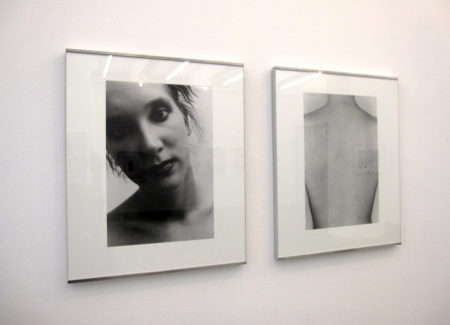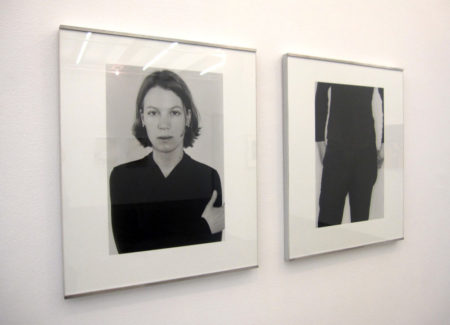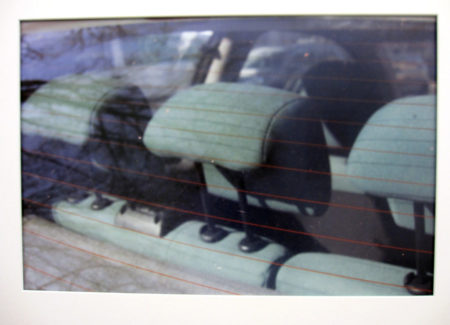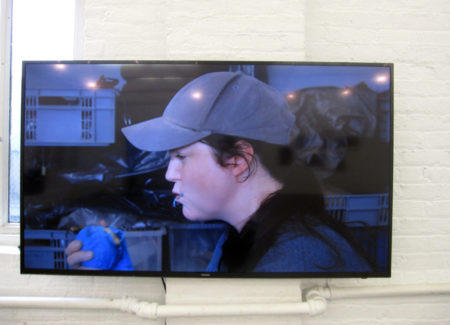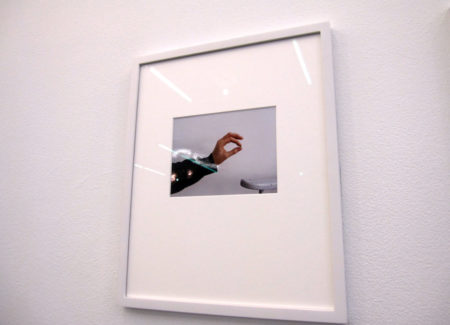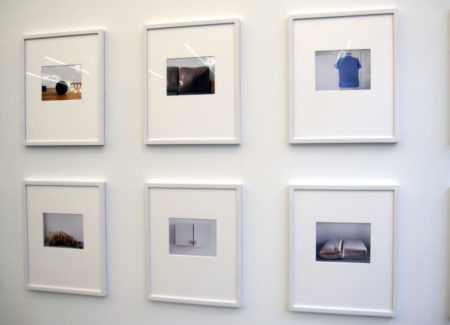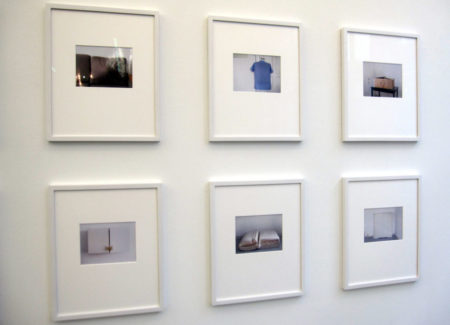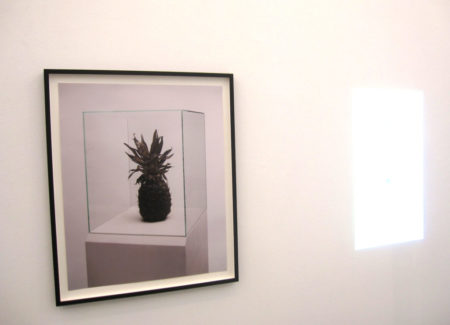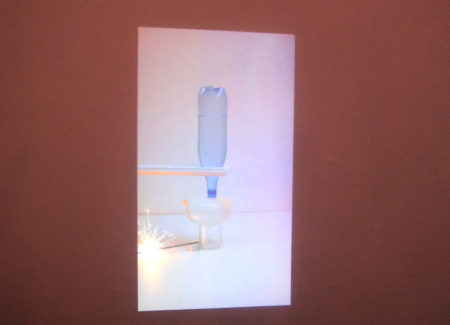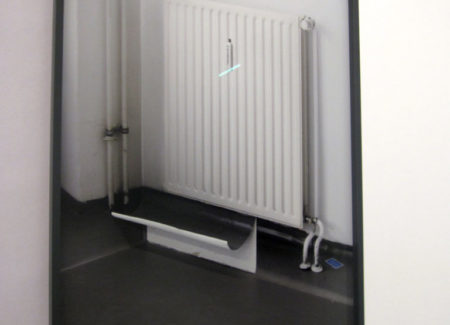JTF (just the facts): A group exhibition showcasing the work of 7 photographers. It includes 16 photographic works framed and hung against white walls in the gallery space, as well as 2 video pieces and one photo-and-wallpaper installation.
The following artists/photographers have been included in the exhibit, with the number of works on view, their processes, dates, and other information as background:
- Sofia Hultén: 1 set of 12 framed color photographs, each print 43.5 x 35 cm (approximately 17 x 14 in), edition of 6; 1 single channel video, 5:41 minutes, edition of 6; 1 color photograph, framed, 55 x 41 cm (approximately 21.5 x 16 in), edition of 6
- Annette Kelm: 1 triptych of 3 framed C-prints, each print 30.75 x 24.5”, edition of 6 +2 AP; 1 C-print, framed, 31.5 x 25”, edition of 6 + 2 AP
- Heinz Peter Knes: 1 C-print, framed, 100 x 73 cm (approximately 39 x 28.5 in), edition of 5 + 2 AP; 1 C-print, framed, 53 x 70 cm (approximately 21 x 27.5 in), edition of 5 + 2 AP
- Alwin Lay: 1 HD-Video, looped, 2:25 minutes, no edition information available; 1 C-print, framed, 90 x 70 cm (approximately 35.5 x 27.5 in), edition of 5 + 2 AP
- Michael Schmidt: 1 gelatin silver print, framed, 60.5 x 72.7 cm (approximately 24 x 29 in), edition of 6 + 1 AP; 1 diptych of two framed gelatin silver prints, each print 60.5 x 73 cm (approximately 24 x 29 in), edition of 5 + 1 AP; 1 diptych of two framed gelatin silver prints, each print 60.5 x 73 cm (approximately 24 x 29 in), edition of 5 + 1 AP
- Kathrin Sonntag: Photographic wallpaper, 105 x 24”, edition of 3
- Tobias Zielony: 1 C-print, framed, 69 x 46 cm (approximately 27 x 18 in), edition of 6 + 2 AP; 1 C-print, framed, 46 x 69 cm (approximately 18 x 27 in), edition of 6 + 2 AP; 1 C-print, framed, 69 x 46 cm (approximately 27 x 18 in), edition of 6 + 2 AP; 1 C-print, framed, 46 x 69 cm (approximately 18 x 27 in), edition of 6 + 2 AP; 1 C-print, framed, 69 x 46 cm (approximately 27 x 18 in), edition of 6 + 2 AP; 1 C-print, framed, 46 x 69 cm (approximately 18 x 27 in), edition of 6 + 1 AP
(Installation shots below.)
Comments/Context: A shuttered business in a small Canadian town, a deserted playground in Germany, and a burnt pineapple in a glass case are a few of the images on view in this lively group show at Thomas Erben. Compact and focused, the exhibition presents works by a mostly younger cohort of conceptually minded photographers living in Germany.
When people think of contemporary German photography, they generally think of the black-and-white typologies of Bernd and Hilla Becher, whose portraits of industrial structures themselves owed much to the Neue Sachlichkeit (New Objectivity) photographers August Sander, Karl Blossfeldt, and Albert Renger-Patzsch. Or else they think of the outsized color photographs of the Becher’s students at Kunstakademie Dusseldorf in the mid-1970s: Andreas Gursky, Thomas Struth, Candida Hofer, and Thomas Ruff.
But the seven artists here, few of them well known in the United States, are taking a variety of fresh approaches to the medium. While nodding to the seriality associated with the Dusseldorf school, they destabilize and undermine the neutrality, conceptual clarity and clean look of their predecessors’ work, branching out into film, video, sculpture, installation, performance, and process art, and employing trompe l’oeil effects, fuzzy logic, and wonky methodologies.
Their influences appear to include the Dadaist projects of Swiss duo Fischli and Weiss; the color snapshot-style pictures of Americans Stephen Shore and William Eggleston; and Wolfgang Tillmans’s seemingly casual depictions of people and places encountered on his travels. Other touchstones might be the work of artists like Roe Ethridge and Lucas Blalock, who take their cues from commercial photography; and the 1970s self-portraits of Janice Guy, who likewise studied in Dusseldorf but whose shadowy or blurred images, far from being objective, are elusive as to their meaning.
The earliest works here are by Michael Schmidt (1945–2014). Well known in Germany as both a photographer and a teacher, he was the closest in age to Guy and his work is closest to her aesthetic. The show includes an early picture of a playground from his 1970s series on a divided Germany. More intriguing, however, are two nearby diptychs from his 1997–99 series “Frauen (Women).” In each diptych, a close-up of a woman’s face is paired with a somewhat longer view of a person’s back. These anonymous secondary bodies, which may, or may not, belong to the original sitter, add dimensionality and mystery to the portraits—are they ghosts? Projections? Or just alternate views?
Annette Kelm, with the biggest market presence in this country, likewise resists the idea of a single representative portrait. In her triptych J’Aime Paris (2013), the same model sits on a piece of brown photo backdrop paper holding a bunch of flowering branches. Nothing much changes from picture to picture, save slight variations in the model’s expression and the placement of her hands. At the same time, the seamless backdrop paper fails to do its job, being visibly seamed and too small to obscure the view of the studio behind it. A second work by Kelm addresses the absurdist possibilities of commercial photography: in it, a cactus poses against a background of fabric emblazoned with text speak: LOL, UR MY BFF, etc. (I used to wonder about where Sigmar Polke got his fabrics; now I wonder where Kelm gets hers.)
Kathrin Sonntag exploits photography’s ability to confuse perceptions of scale and perspective. For this show she submits a photograph of a room, one wall of which she has papered with a photo mural of a different wall. The wallpaper is peeling up, but this is not quite clear in the photograph, where the peeling paper simply reads as mysterious occlusion in the image. Sonntag helpfully solves this visual conundrum by mounting the photograph on a column covered with the same wallpaper.
Alwin Lay, originally from Romania, was a student of Christopher Williams, and while his work does not resemble Williams’s immaculate explorations of photographic conventions, it may reflect Williams’s subtle humor. Paired with a photograph of a burned pineapple in a museum case, a blown-out film shows sparkler heating up a balloon which, when burst, will release a flow of water from an upside down bottle. It’s a clear reference to Fischli and Weiss’s classic 1987 Rube Goldberg extravaganza The Way Things Go, but while the latter’s setups result in a wholly satisfying sequence of thumps and explosions, Lay’s production runs on a loop in which the inevitable never happens. As in advertising, satisfaction is forever deferred.
Two works by Swedish artist Sofia Hultén upend the logic of rule-based performance art by the likes of Bruce Naumann. Over 12 color photographs, Hultén presents a series of progressively larger objects, from a ball bearing to a mattress—the last panel of the work depicts a freestanding cupboard in which all of the objects are presumably locked away. She steals the show, however, with a video in which she engages in a ritualized series of actions: wiping an apple on her jeans, taking a few bites, tossing the remains in a plastic bag, then tossing the bag in a container of used steel wool pads. But as the video progresses, the artist begins to deviate from her script. She wipes a half-eaten apple on her pants. She puts an uneaten apple into the bag and then eats it through the bag. She wipes the bag on her jeans, and eats the apple out of the garbage. Expressionless, she continues with her program, even as the rules fall apart.
Heinz Peter Knes’s barely-there photographs—as abstract as any of Wolfgang Tillmans’s—and a group of documentary works by Tobias Zielony of life in Manitoba, Canada, round out the show. Like the other artists in exhibition, Knes and Zielony concern themselves with the idea of the in-between. In Knes’s case that middle ground is between abstraction and representation; in Zielony’s it is sociological and geographical.
While nodding to the rigors of past schools, each of these artist’s works convey an uncertainty and absurdism that befits our times. Erben believes they should all be better known here, and judging by this show he is right.
Collector’s POV: The prints in this show are priced as follows, by photographer:
- Sofia Hultén: €9500 for the set of 12 framed color photographs; €5000 for the single-channel video; €3000 for the single framed color photograph
- Annette Kelm: €26000 for the triptych of framed C-prints; €9200 for the single framed C-print
- Heinz Peter Knes; €4000 to €5000 for C-prints depending on size
- Alwin Lay: no price on video; photograph not for sale
- Michael Schmidt: €12000 for single framed silver gelatin print; €21000 for each diptych
- Katherin Sonntag: €6500 for photographic wallpaper
- Tobias Zielony: €6000 for each C-print
The works of these photographers do not have significant secondary market history, so gallery retail likely remains the best option for those collectors interested in following up.
